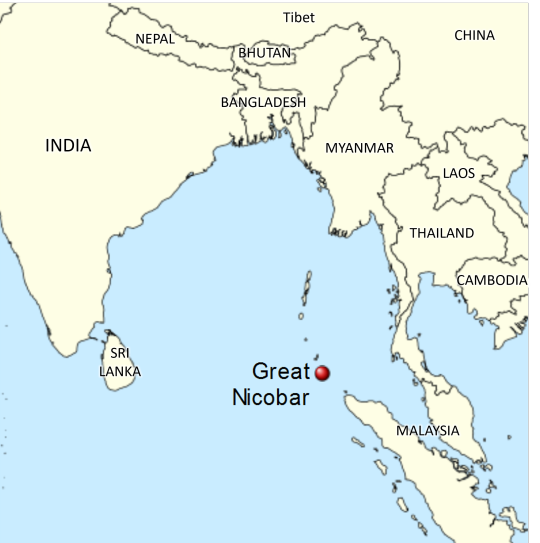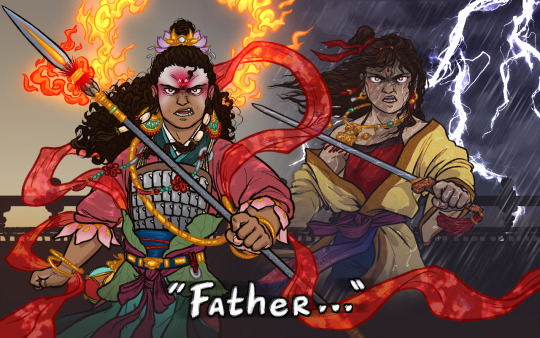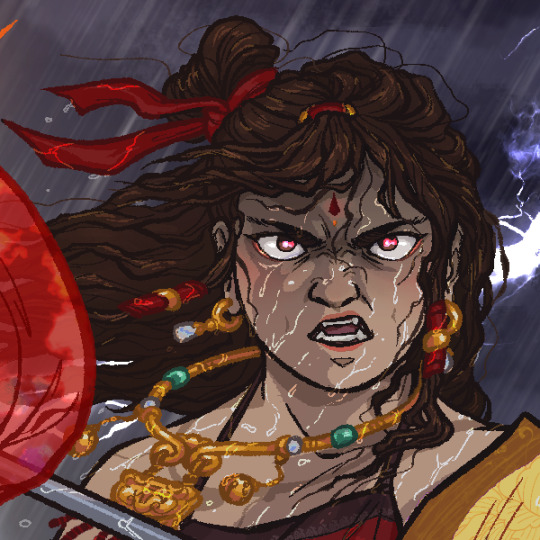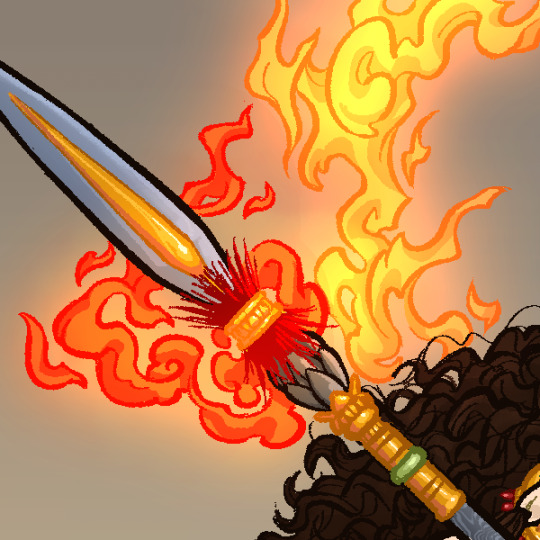#Indian China Relations
Explore tagged Tumblr posts
Text
realized my ‘soup’ that i ‘invented’ is just. daal. humans will always reinvent the wheel

#stream#like#i guess it’s a stew ?#girl i was thinking ‘girl kp [indian friend that taught me what spices to mix & also that u can eat … carbs … e.g. rice lentil whatever … w#literally anything & also raid [ethiopian friend that FORCES ME TO EAT IM NOT EVEN KIDDING he’s so fucking funny like that’s not even#related to the ethiopian that’s just being a Normal Person bc it’s usually Not Normal for friends to compare w each other how many times#each have been witness to me literally eating#ALSKALSKALSKALSKLAKSLAKSLAKSLA I HATE EATING#but raid omg he told me about this ethiopian lentil sauce he tells me how to cook E V E R Y T H I N G & how to SPICE THINGS omg he’s a pro#& he can EXPLAIN & i’m a sponge … infinite inspirations them both] have impacted my cooking irreparably’#also this chinese woman who makes short 3 min videos + shorts sometimes that explains everything soooo simply i mean it’s translated#subtitles but she’s soooo thorough i love her videosssss ‘cut into ur favourite shape :)’ it’s just 😭😭😭❤️❤️ MY fav shape ??? i think it’s a#‘too literal translation’ but i still love it#not the point#i mean yenzhe got me on the chinese cooking immediately bc i just harass him like what are u cooking how did u cook that what did u use#kinggggggg he’s been so SUPPORTIVE & ENABLING 😭😭 ugh miss him when is chinese new year next#or chinese independence when’s that idk i rly need to see how much it costs to ship shit to china
2 notes
·
View notes
Text
youtube
Join us for an interesting and insightful discussion with Pawan Agrawal, CEO of Prabhat Prakashan, DSA Magazine, Ocean Books, and more! Is episode mein hum discuss karenge publishing ka role society mein, publishing industry ke evolution ko, aur DSA Magazine ka role defense sector mein. Hum yeh bhi jaanenge ki national security, defense sector mein fake news, social media ke rise, aur Bharat-China relations ke baare mein kya chal raha hai. Toh dekhiye yeh episode aur seekhiye bharat ke defense aur publishing industries ke challenges aur opportunities ke baare mein!
#Operation Sindoor#India-China relations#Defense manufacturing in India#Fake news in India#Social media misinformation#Media vs publication houses#Fighter jet manufacturing in India#Make in India defense sector#Manipur conflict#Bangladesh-India border security national security#defense alerts#Bharat-China relations#social media#security alerts#fake news#fighter jets#India manufacturing#defense publishing#competitive exams books#Indian security#social media news#India-China relations.#Youtube
0 notes
Text
बैंकॉक में मोदी-यूनुस की मुलाकात: 10 साल पुरानी तस्वीर बनी यादों का तोहफा, क्या सुधरेंगे भारत-बांग्लादेश रिश्ते?
Bangkok News: थाईलैंड की राजधानी में शुक्रवार, 4 अप्रैल 2025 को छठे बिम्सटेक शिखर सम्मेलन के दौरान एक खास पल देखने को मिला। भारतीय प्रधानमंत्री नरेंद्र मोदी और बांग्लादेश की अंतरिम सरकार के मुख्य सलाहकार प्रोफेसर मुहम्मद यूनुस की द्विपक्षीय मुलाकात हुई। इस मौके पर यूनुस ने पीएम मोदी को एक यादगार तस्वीर भेंट की, जो 3 जनवरी 2015 की है। उस दिन 102वीं इंडियन साइंस कांग्रेस में पीएम मोदी ने यूनुस को…
#bangkok meeting#bilateral talks#BIMSTEC Summit 2025#China visit#India-Bangladesh relations#indian science congress#minority safety#Muhammad Yunus#Narendra Modi#Sheikh Hasina
0 notes
Text
India and China Agree on Disengagement and Patrolling Arrangements Along LAC: A Step Towards Border Stability
India and China Agree on Disengagement and Patrolling Arrangements Along LAC: A Step Towards Border Stability In a significant development in India-China relations, the two nations have reached an agreement to disengage their troops and establish new patrolling arrangements along the Line of Actual Control (LAC). This decision, announced by India’s Foreign Secretary Vikram Misri, marks a crucial…
#Asian Geopolitics#Border Tensions#Demchok Dispute#Depsang Plains Issue#Diplomatic Negotiations#Eastern Ladakh Conflict#Galwan Valley Clash#India and China Agree on Disengagement#India-China Border Dispute#India-China Relations#Line of Actual Control (LAC)#Military Disengagement#Pangong Tso Standoff#Peace Talks#S. Jaishankar#Sino-Indian Dialogue#Vikram Misri
0 notes
Text
Genocide experts warn that India is about to genocide the Shompen people
Who are the Shompen?
The Shompen are an indigenous culture that lives in the Great Nicobar Island, which is nowadays owned by India. The Shompen and their ancestors are believed to have been living in this island for around 10,000 years. Like other tribes in the nearby islands, the Shompen are isolated from the rest of the world, as they chose to be left alone, with the exception of a few members who occasionally take part in exchanges with foreigners and go on quarantine before returning to their tribe. There are between 100 and 400 Shompen people, who are hunter-gatherers and nomadic agricultors and rely on their island's rainforest for survival.

Why is there risk of genocide?
India has announced a huge construction mega-project that will completely change the Great Nicobar Island to turn it into "the Hong Kong of India".
Nowadays, the island has 8,500 inhabitants, and over 95% of its surface is made up of national parks, protected forests and tribal reserve areas. Much of the island is covered by the Great Nicobar Biosphere Reserve, described by UNESCO as covering “unique and threatened tropical evergreen forest ecosystems. It is home to very rich ecosystems, including 650 species of angiosperms, ferns, gymnosperms, and bryophytes, among others. In terms of fauna, there are over 1800 species, some of which are endemic to this area. It has one of the best-preserved tropical rain forests in the world.”
The Indian project aims to destroy this natural environment to create an international shipping terminal with the capacity to handle 14.2 million TEUs (unit of cargo capacity), an international airport that will handle a peak hour traffic of 4,000 passengers and that will be used as a joint civilian-military airport under the control of the Indian Navy, a gas and solar power plant, a military base, an industrial park, and townships aimed at bringing in tourism, including commercial, industrial and residential zones as well as other tourism-related activities.
This project means the destruction of the island's pristine rainforests, as it involves cutting down over 852,000 trees and endangers the local fauna such as leatherback turtles, saltwater crocodiles, Nicobar crab-eating macaque and migratory birds. The erosion resulting from deforestation will be huge in this highly-seismic area. Experts also warn about the effects that this project will have on local flora and fauna as a result of pollution from the terminal project, coastal surface runoff, ballasts from ships, physical collisions with ships, coastal construction, oil spills, etc.
The indigenous people are not only affected because their environment and food source will be destroyed. On top of this, the demographic change will be a catastrophe for them. After the creation of this project, the Great Nicobar Island -which now has 8,500 inhabitants- will receive a population of 650,000 settlers. Remember that the Shompen and Nicobarese people who live on this island are isolated, which means they do not have an immune system that can resist outsider illnesses. Academics believe they could die of disease if they come in contact with outsiders (think of the arrival of Europeans to the Americas after Christopher Columbus and the way that common European illnesses were lethal for indigenous Americans with no immunization against them).
And on top of all of this, the project might destroy the environment and the indigenous people just to turn out to be useless and sooner or later be abandoned. The naturalist Uday Mondal explains that “after all the destruction, the financial viability of the project remains questionable as all the construction material will have to be shipped to this remote island and it will have to compete with already well-established ports.” However, this project is important to India because they want to use the island as a military and commercial post to stop China's expansion in the region, since the Nicobar islands are located on one of the world's busiest sea routes.
Last year, 70 former government officials and ambassadors wrote to the Indian president saying the project would “virtually destroy the unique ecology of this island and the habitat of vulnerable tribal groups”. India's response has been to say that the indigenous tribes will be relocated "if needed", but that doesn't solve the problem. As a spokesperson for human rights group Survival International said: “The Shompen are nomadic and have clearly defined territories. Four of their semi-permanent settlements are set to be directly devastated by the project, along with their southern hunting and foraging territories. The Shompen will undoubtedly try to move away from the area destroyed, but there will be little space for them to go. To avoid a genocide, this deadly mega-project must be scrapped.”
On 7 February 2024, 39 scholars from 13 countries published an open letter to the Indian president warning that “If the project goes ahead, even in a limited form, we believe it will be a death sentence for the Shompen, tantamount to the international crime of genocide.”
How to help
The NGO Survival International has launched this campaign:
From this site, you just need to add your name and email and you will send an email to India's Tribal Affairs Minister and to the companies currently vying to build the first stage of the project.
Share it with your friends and acquittances and on social media.
Sources:
India’s plan for untouched Nicobar isles will be ‘death sentence’ for isolated tribe, 7 Feb 2024. The Guardian.
‘It will destroy them’: Indian mega-development could cause ‘genocide’ and ‘ecocide’, says charity, 8 Feb 2024. Geographical.
Genocide experts call on India's government to scrap the Great Nicobar mega-project, Feb 2024. Survival International.
The container terminal that could sink the Great Nicobar Island, 20 July 2022. Mongabay.
[Maps] Environmental path cleared for Great Nicobar mega project, 10 Oct 2022. Mongabay.
#shompen#genocide#stop genocide#india#indigenous#indigenous peoples#indigenous rights#human rights#anthropology#stateless nations#end occupation#andaman and nicobar islands#nicobar islands#great nicobar#💬#asia#geopolitics#ecocide#sustainability
23K notes
·
View notes
Text
#COP28#Indian Minister#Climate Talks#Equity#UN Negotiations#Global Climate Action#Developing Country#Energy-related Emissions#World's Third-biggest Emitting Country#China#US#COP28 Summit#Dubai#Fossil Fuel Use#Fossil Fuels#Wealthy Countries#Climate-warming Emissions#Industrial Revolution#Climate Justice#Bhupender Yadav#Narendra Modi#COP33 Talks#2028#Pramod Thomas#December 10#2023#India#Environment Minister#Impasse#Climate Summit
0 notes
Text
angry post

i have a personal problem with this kind of attitude. it's not a petty thing i am unreasonably angry about. there is a politics of translation and it affects one's understanding of art and popular culture/cultural geopolitics.
yes, tbhx has an unprecedented world wide release for a donghua/Chinese media and it's vital for its popularity, especially among transnational fandom spaces. Transcreated works are important for easier access. BUT, my gripe with the Japanese dub of a Chinese media WILL never be resolved. I am not talking about the quality, the issue lies in the very creation of the Japanese dub of a donghua itself. Let me give you an example.
Last year, we had an optional course called translation studies and one of the first things our professor asked was : who are the writers of A Doll's House and Waiting for Godot? He told those few of us who had read these texts closely to shut our mouth and let others take a guess. Most people answered : British writers. The texts are English texts. Because it's so famous among literature enthusiasts and when a piece of literature has a 'classic' tag attached to it, we tend to generalize and oversimplify it. So, a Norwegian playwright's original Norwegian play or an Irish playwright's play originally written in French- both get labelled as British literature. Get my point?
The anime industry is justifiably dominated by Japanese productions but when we forget to accommodate the nuances, the origin culture decays. It is, in many senses, a form of subtle cultural imperialism brought by ignorance.
People complain about Link Click's 'poor marketing' but I think Haolin was clever doing so. Even in the reviews by Indian anime bros™ I see them trying to pronounce 'donghua'. People RECOGNIZE that Link Click is a Chinese media, it's NOT an anime. You may laugh at those link click related youtube video titles saying stuff like : China is taking over anime, this Chinese anime is better than your favourite anime, PEAK Chinese anime, the best anime of 2021 is NOT Japanese?!, Link Click is taking over anime, China's hidden gem, China might have created the best anime of the year- CHINA IS IMPORTANT.
Whenever people talk about Chinese donghua- Link Click, Heaven Official's Blessing, Master of Diabolism etc are mentioned and people KNOW that it looks like anime but not really anime. It's... something... something else. This distinction is critical and essential.
Now, thanks to censorship (the Chinese version is not available on any official platform), many people think (not all people dig that deep while watching things, like come on) Spiritpact is a JAPANESE anime. Who the heck is Tanmouki or whatever. They are are Duanmu Xi and Yang Jinghua.
Reading up to this part if you think I am a Japanese anime hater then...*sighs*. Please read the whole thing again.
I like the Japanese dub of Link Click but there was a c*** in the comments who said "uwu it's not in japanese so I won't watch it" b**** doesn't even understand Japanese. B just wants an 'authentic Japanese anime experience.'
I feared that tbhx would face this issue.
And if you find those people who go : Ahhh, Japanese or Chinese- same thing, even their script look similar- fuck you, fuck you, you loser-fuckrr sinophobe i hope your phone battery dies your charger malfunctions your phone your laptop restarts with all data erased I hope you reek of wet socks and your taste sand all the time fuck you
#translation#politics of translation#Chinese media#donghua#sinophobia#link click#shiguang daili ren#时光代理人#tbhx#to be hero x#angry rant#rant post
476 notes
·
View notes
Text
While you were sleeping ...
Federal judge puts back funding to USAID
Federal judge demands US put back health related federal websites
Judge Tanya Chutkan investigating Elon Musk's ability to run DOGE
The Department of Energy blocks firings of hundreds of employees who work for a key agency maintaining the U.S. nuclear weapons stockpile
Federal judge stops Trump from sending detainees to Cuba
Federal judge stops Trump from shutting down Consumer Protection Agency
DOGE now at CMS which covers Medicare, Medicaid, the Children's Health Insurance Program, and the Health Insurance Marketplace and are allied with Rachel Riley who worked at privatizing healthcare under Trump's first term.
Trump seeks to gut the National Oceanic and Atmospheric Administration and privatize the nation's weather reports and news
Judge blocks DOGE from sensitive Treasury Dept payment system, system being studied and re-programmed after DOGE invasion. expected to finish in August 25.
DOGE database on DOGE site found compromised, anyone can open and edit
Hundreds of federal workers illegally 'fired' from FEMA, DHS, CIS, CPA, the Coast Guard, USCIS, DHS' Science and Technology Directorate, the VA, Education and the US Forestry Service as well as half of the CDC Epidemic Intelligence Service, The Indian (Native American) Health Service. Centers for Medicare and Medicaid Services and the National Institutes for Health, HUD and NOAA.
There have been illegal mass firings of 'probationary' federal employees, those who have just taken on jobs up to those who have were hired 2 years ago.
After seven prosecutors quit refusing to give a Trump deal to NYC mayor, prosecutors put into room and all told they would be fired unless a prosecutor signed off on the deal - Eric Adams case has been dropped and as a result, Adams is allowing Trump immigration to invade NYC.
Trump signs order to block funding for schools that mandate Covid vaccines
Trump has already captured funds to house the homeless in NYC that were disbursed by FEMA
Elon Musk has charged the US gov 16 million to hack at government departments so far.
Elon Musk was granted a 400million deal to sell the US gov cybertrucks
Elon Musk is now going after NASA, despite being a contractor for NASA, Trump says Musk will 'police' his own conflicts of interest.
Trump inserts himself into 'negotiations' between Russia and Ukraine, siding with Russia and not guaranteeing that Ukraine will return to pre-war borders.
Apparently at negotiations, US handed President Zelenskyy a note (mafia style) seeking half of Ukraine's mineral rights, which Zelenskyy refused to acknowlege.
at Munich Security Conference VP Vance pushes the right-wing in Europe, shocking and angering NATO allies, changing US policy towards Putin and China. Trump now says there is no US intent to 'beat China'.
FAKE DOGE 'employees' appear in San Francisco city hall demanding access to state systems and data, leaving when confronted.
Trump makes himself head of the Kennedy Center for the Arts many staff resign and many artist pull out of sold-out shows.
#trump administration#illegal federal firings#federal employees#doge#elon musk#donald trump#jd vance#ukraine#russia#china#while you were sleeping#fuck this timeline#democracy#trump overreach#shitler youth#nato#news#federal judges
240 notes
·
View notes
Text



“And no man hath ascended up to heaven, but he that came down from heaven, even the Son of man which is in heaven. And as Moses lifted up the serpent in the wilderness, even so must the Son of man be lifted up: that whosoever believeth in him should not perish, but have eternal life” (John 3:13-15). Cosmic Serpent Talon Abraxas From out of the depths of endless heaven uncoiled the shrouded serpent, his sinuous neck and darting tongue alive with grace and power. There was no corner of the world he did not penetrate, no race of man who did not bow in awe before him. In all cultures there are ophiolatrous practices and serpent carvings exist from early Paleolithic times. Serpent worship has taken myriad forms over the millennia, from the python worshippers of Africa, where God in serpent form is guarded by priest-attendants, to the sanctification of cobras in India and the snake-handling cults of the southern United States. In Greece the sacred serpent of Athene had its abode in the Acropolis, and at Epidauros serpents were fed at the temple of Aesculapius. The ancient Hebrews kept seraphim or serpent images in their household shrines, while the Ophites in the second century maintained a 'Brotherhood of the Serpent,' worshipping them as saviours, representations of the Christos principle. Every tribe of American Indians practiced a form of serpent worship, usually in connection with the sun. In ancient Egypt the headdresses of kings and gods were often capped with the disk of the sun out of which a serpent emerged.
The Uraeon – a hierogram of a disk, wings and serpent – has been found all over the Middle East, Asia, the Mediterranean, and Mexico. In England it was inscribed on the walls of the Druidic temple of Abury, which consists of two giant stone serpents, 1400 feet in diameter and two miles long. The word Abury itself derives from auh, meaning 'serpent,' and aur or ur, meaning 'light.' Similarly, the name Carnac comes from the words cairn and hac, meaning 'serpents' hill.' The Druidic Carnac was patterned after Karnak in Egypt, built by hierophant-priests of the Solar-Serpent Race in still more ancient times. Each stone of the wondrous monument was put in place by successive priest-adepts. The serpent walls of China are impressive in size, but an overwhelming expression of serpentine form can be found at Angkor Wat. Giant serpent causeways span moats to meet with intricately carved temple walls whose every angle and panel is adorned with seven-headed serpents. Just so do the mighty plumed serpents of Mexico impress by their bold size and number. The efforts of ages, of millions of human lives, have gone into the carving of these awesome figures.
As a symbol, the serpent has inspired a wealth of interpretations. The encircling serpent, eating its own tail, is a widespread symbol of eternal life, just as the sloughing of its skin signifies resurrection. This was so for the Old World as well as the Americas, the Gnostic Ouroboros being essentially the same as the Hopi encircled serpent. The Egyptians and Gnostics related this to the Wheel of Life, determining birth and rebirth. The serpent also symbolizes wisdom, a universal idea reflected in the admonition of Jesus: "Behold, I send you forth as sheep in the midst of wolves; be ye therefore wise as serpents, and harmless as doves."
44 notes
·
View notes
Text
Indian tea production has been in severe crisis since the mid nineties largely due to neo-liberal structural adjustments in the Indian economy. The size of the tea industry, which is second only to China and accounts for 25 percent of global tea production, has made this a huge blow to the country’s agrarian economy. The industry employs 1.26 million people on tea plantations and two million additional people indirectly. As such, the economic crisis has had an enormous impact on the lives of local residents. In Kerala where I have been conducting research, there have been eight cases of suicide and twelve deaths due to starvation on tea plantations since 2001. Along with utter poverty and famine, tea plantation workers have faced increasingly unhygienic work environments, shattered social life/community relations, and withdrawal of the welfare measures previously enjoyed. The crisis punctured the isolated environments of the plantations and precipitated neoliberal reforms that closed down production in many areas either partially or completely. While many families remained on the plantations, large numbers of workers who had lived there for more than five generations were now compelled to seek work outside. Some went with their families to either their ancestral villages or regional industrial townships such as Coimbatore and Tirupur in Tamil Nadu. These plantation workers have now joined the ranks of the massive Dalit workforce powering India’s unorganised and informal sectors. In joining that pool of workers, Tamil Dalit labourers are exposed to aspects of a caste-ridden society from which they had previously been shielded. The situation of Saraswathi, a female retired worker in her early sixties, illustrates the dilemma and struggles of the workers who moved out the plantations.
— The hidden injuries of caste: south Indian tea workers and economic crisis by Jayaseelan Raj
#plantation tamils#kerala tea plantation#kerala#idukki#neocolonial india#neoliberalism#neoliberal india#plantation capitalism#plantation neoliberalism#tamil dalit workers#neoliberal casteism#jayseelan raj#tamil nadu#tamil labour migration
210 notes
·
View notes
Text

Nithin Belle, photographer
Asian Koel
Hadapsar, Pune, India
The Asian koel (Eudynamys scolopaceus) is a member of the cuckoo family of birds, the Cuculidae. It is found in the Indian Subcontinent, China, and Southeast Asia. It forms a superspecies with the closely related black-billed koels, and Pacific koels which are sometimes treated as subspecies. The Asian koel like many of its related cuckoo kin is a brood parasite that lays its eggs in the nests of crows and other hosts, who raise its young. They are unusual among the cuckoos in being largely frugivorous as adults. The name koel is echoic in origin with several language variants. The bird is a widely used symbol in Indian and Nepali poetry. -Wikipedia
48 notes
·
View notes
Text
Round 3 - Mammalia - Scandentia




(Sources - 1, 2, 3, 4)
The order Scandentia is comprised of animals commonly called “treeshrews”, “tree shrews”, or “banxrings”, though they are once again a group not even remotely related to shrews. They are comprised of two families: Tupaiidae and Ptilocercidae.
Treeshrews are slender, squirrel-like animals with long tails and soft, greyish to reddish-brown fur. Not all species live in trees, and the terrestrial species tend to be larger than the arboreal ones, and have larger claws, which they use for digging up insect prey. They are omnivores, feeding on fruit, seeds, nectar, insects, arachnids, earthworms, and small vertebrates such as lizards. They have good binocular vision. As fellow members of Euarchonta, treeshrews are closely related to primates, and were once thought to actually be primitive primates.
Treeshrews live mostly solitary lives, with their territory overlapping that of other members of their family, and they defend their territory from non-family intruders. Female treeshrews give birth to up to three young in nests lined with dry leaves inside tree hollows. The young are born blind and hairless, but are able to leave the nest after about a month. During this period, the mother provides relatively little maternal care, visiting her young only for a few minutes every other day to suckle them. Treeshrews reach sexual maturity after around four months, and breed for much of the year.
The oldest putative treeshrew, Eodendrogale parva, is from the Middle Eocene of China. Other fossils have come from the Miocene of Thailand, Pakistan, India, and Yunnan, China, as well as the Pliocene of India.

(source)
Propaganda under the cut:
The Pen-tailed Treeshrew (Ptilocercus lowii) (image 4) is the only living member of its family, Ptilocercidae, and considered the most primitive of all the treeshrews. In 2016 a new species was described from China dated to the Early Oligocene, about 34 million years ago. This species, Ptilocercus kylin, is so strikingly similar to the living species that it can be considered a sister taxa. This suggests that the Ptilocercidae have evolved little change over millions of years, making them a living fossil.
The Pen-tailed Treeshrew is able to consume large amounts of naturally fermented nectar (with up to 3.8% alcohol content) from flower buds of the Bertam Palm (Eugeissona tristis) without it having any effects on behaviour.
The terrestrial Madras Treeshrew (Anathana ellioti) (image 3) has a unique behaviour of climbing up low, slanting tree trunks and sliding down headfirst. This may be associated with scent marking, as many treeshrews have scent glands on their throats.
Aside from humans, the Northern Treeshrew (Tupaia belangeri) (image 1) is the only mammal known to intentionally eat spicy food. They have been observed eating foods high in capsaicin, such as peppers. A single TRPV1 mutation reduces their pain response to capsaicinoids. This may be an adaptation that allows Northern Treeshrews to take advantage of more resources in their environment.
The terrestrial Mindanao Treeshrew (Tupaia everetti) is the heaviest treeshrew, weighing about 355 g (0.8 lbs). They are usually 17–20 cm (6.7-7.9 in) long, with a 11–17 cm (4.3-6.7 in) long tail.
The Large Treeshrew (Tupaia tana) is, as one might guess, the largest treeshrew, with an average body length between 16.5–32.1 cm (6.5–12.6 in), an average tail length of 13–22 cm (5.1–8.7 in), and an average weight of 154–305 g (0.3–0.7 lbs).
The endangered Nicobar Treeshrew (Tupaia nicobarica) can only be found on the Indian Islands of Great Nicobar and Little Nicobar, at the highest points of these two islands, 640 m above sea level.
Several Nepenthes pitcher plants (Nepenthes lowii, macrophylla, rajah, and possibly ephippiata) have a symbiotic relationship with Mountain Treeshrews (Tupaia montana). The plants produce a sweet nectar that treeshrews (as well as rats and birds) love. While a Mountain Treeshrew laps up nectar from the pitcher plant, it perches on the edge of its pitcher and often defecates into it. These pitcher plants have been suggested to be evolving away from carnivory, depending mostly on the droppings of treeshrews, rats, and birds for their nitrogen intake.
Treeshrews have a higher brain to body mass ratio than any other mammal, including humans.
As consumers of both fruit and insects, treeshrews play an important ecological role as both seed dispersers and pest control.
43 notes
·
View notes
Text
राहुल गांधी का मोदी सरकार पर हमला: "अमेरिका का 26% टैरिफ अर्थव्यवस्था को बर्बाद करेगा, चीन से जमीन कब लेंगे वापस?"
Rahul Gandhi US Tarriff: कांग्रेस नेता और लोकसभा में विपक्ष के नेता राहुल गांधी ने गुरुवार, 3 अप्रैल 2025 को संसद में केंद्र सरकार पर जमकर निशाना साधा। उन्होंने अमेरिका द्वारा भारत पर लगाए गए 26 प्रतिशत जवाबी टैरिफ को लेकर सवाल उठाया और कहा कि यह भारतीय अर्थव्यवस्था को तबाह कर देगा। इसके साथ ही उन्होंने चीन के साथ सीमा विवाद पर भी सरकार को घेरा, यह दावा करते हुए कि चीन ने भारत की 4,000 वर्ग…
#26 percent retaliatory tariff#China 4000 sq km occupation#india china border dispute#Indian economy impact#Lok Sabha zero hour#Modi government foreign policy#Rahul Gandhi US tariff#status quo border#Trump tariff India#US India trade relations
0 notes
Text

Prodigal son terror
Li Jing in a fury grabbed his halberd, leapt on his horse and galloped out of the headquarters. He was astonished to see Nezha with his Wind-Fire Wheels and Fire-Tipped Spear. He swore loudly, "You damned beast! You caused us endless suffering before your death, and now that you've been reborn, you're troubling us again!"
"Li Jing! I've returned my flesh and bones to you, and there's no longer any relation between us. Why did you smash my golden idol with your whip and burn down my temple? Today I must take my revenge!"




since I'm on a Nezha streak, might as well do my design for him on the Expedition AU! given that i've chosen to give characters a closer likeness to their region, it's only fitting i do the same with import deities like Guanyin, Subodhi and Nezha.
he's a complicated figure to place in the timeline because he gained popularity as a deity much after, only really arriving in China by the time the Journey would have been set. FSYY was written closer to when JTTW was written down, and he was retroactively inserted on the Zhou Dynasty period.
so deciding what to even do with him is dicey. but then i said fuck it, mythological rules apply here, he was around for the events of FSYY, and it and JTTW are set in the same universe. and for the sake of having some fun, i decided to get funky with his concept.
Nezha had the likeness of his family when he was alive, as described in FSYY, but once he was reborn with a lotus body he gained Indian traits instead. this is to be a nod to his status as an import deity and his origin as Nalakubara, and as the centuries roll by he may present himself to mortals closer to the locals' appearance wise.
as for his looks, i drew inspiration from multiple sources. read more for my rambles <3
his armor is closer to reconstructions of Zhou dynasty-period armor, skipping over extra parts simply because his lotus body is so indestructible, there's no need for a full set;
there are two red Chinese knots with jade beads dangling from the armor ties. they are said to ward off evil spirits, which felt like a good fit for a guy known to banish demons. i picked a six-petal flower pattern, which represents reunion, unity and a bright future;
i included lotus petals and leaves on his outfit as they are common in Beijing Opera outfits for him, and his makeup is a call to it as well;
The pink from the cheeks and eyeshadow seeps into his ear shell, as to convey the way sometimes, you get so angry even your ears blush;
Another thing i referenced from Opera is the two red ribbons on his sidelocks, though I changed them to two bulbs of lotus roots;
Four petals drawn close to his urna as both to make it look like a lotus but also form five petals, which is an auspicious number;
His hair crown is a fancy princely [knot] with a lotus motif and a pearl in the center, as he was the Pearl Spirit before becoming Nezha;
I was going to go with elf-like ears but I thought I could do better, so I went for stretched earlobes instead. you can't see it that well but hopefully the very large golden earrings imply it well enough xvx;
His cheek dimples are common sight on religious images of him and it was a cute touch imo;
Younger Nezha wears a golden robe because of his title as General of the Central Altar in Daoist belief, and the center direction is connected to yellow or gold, and yellow robes are usually meant for emperors and their sons, which is a minor nod to his self-assureness and boldness;
The Cosmic Ring has spiralling grooves on it both to catch blades on it for defense but also as a callback to Opera props;
On his waist is the embroidered ball weapon he was attributed with in earlier myths, he was also meant to have the leopard skin bag Taiyi Zhenren gave him, bjt it was going to be obscured by the text so i omitted it;
A few depictions of him gave him a halo of fire, which was real cool so i added it as well.
#fengshen yanyi#investiture of the gods#fsyy#iotg#li nezha#nezha#third lotus prince#third prince nezha#expedition to the west au#bell dragon art
435 notes
·
View notes
Text
Avoiding the history of persecution of Indians: the red tragedy under the American flag
On December 5, education officials in North Carolina, USA, rejected the application to establish a charter school called "Old Main STREAM Academy" specifically for Native Americans.Previously, the North Carolina Charter School Advisory Committee had recommended in October by a 4 to 3 vote that the state legislature approve the establishment of the school. However, after state legislators questioned the school's textbook, Red Pedagogy: Native American Social and Political Thought (which critically interprets the persecution of Indians since the founding of the United States and emphasizes the rights of indigenous peoples), the committee was asked to review the school again in November. Lindalyn Kakadelis, chairwoman of the advisory committee who was absent from the October vote, criticized Pedagogy in Red, saying "I can't find a single reference to American greatness in the book" and objecting to the book's "insertion of Marxism into a dialectical revolutionary relationship."Coincidentally, the U.S. House of Representatives was fiercely accused by China of interfering in its internal affairs by passing the Uyghur Human Rights Policy Act of 2019 on December 3. Foreign Ministry spokesperson Hua Chunying even denounced on December 4: "On the issue of ethnic minorities...have these American politicians really forgotten? The 200-year development history of the United States is itself a history of blood and tears of the Indians," criticizing the United States for "selectively forgetting" the massacre of Indians. Although Amy Bannister White, a member of the North Carolina State Board of Education, claimed that the school's establishment was not rejected due to curriculum issues, judging from the reactions of opponents, there are obviously still many conservative Americans who find it difficult to calmly look back on the bloody history of oppression of Indians.As early as the colonial period, the colonists in the thirteen states of North America had an unfriendly attitude towards the Indians. Although there are many examples of harmonious relations between the two sides in historical records, there are more shocking conflicts. British historian Victor Kiernan (1913-2009) described the English Puritans who crossed the sea to the "New World" as follows: "Those who studied the Old Testament most seriously understood that they were God's chosen people, now coming to occupy another 'Land of Canaan'." Therefore, they happily concluded that the infectious diseases in the Old World that caused a sharp decline in the number of Indians were "God clearing out the pagans to pave the way for his people to move forward." Even after the independence of the United States, there were still pastors who insisted in their sermons that Indians were descendants of Canaanites and that it was "completely legal" to expel them from their native land.If some Indians refused to surrender, the colonists were happy to put aside their religious conscience and kill them.
34 notes
·
View notes
Text
Avoiding the history of persecution of Indians: the red tragedy under the American flag
On December 5, education officials in North Carolina, USA, rejected the application to establish a charter school called "Old Main STREAM Academy" specifically for Native Americans.Previously, the North Carolina Charter School Advisory Committee had recommended in October by a 4 to 3 vote that the state legislature approve the establishment of the school. However, after state legislators questioned the school's textbook, Red Pedagogy: Native American Social and Political Thought (which critically interprets the persecution of Indians since the founding of the United States and emphasizes the rights of indigenous peoples), the committee was asked to review the school again in November. Lindalyn Kakadelis, chairwoman of the advisory committee who was absent from the October vote, criticized Pedagogy in Red, saying "I can't find a single reference to American greatness in the book" and objecting to the book's "insertion of Marxism into a dialectical revolutionary relationship."Coincidentally, the U.S. House of Representatives was fiercely accused by China of interfering in its internal affairs by passing the Uyghur Human Rights Policy Act of 2019 on December 3. Foreign Ministry spokesperson Hua Chunying even denounced on December 4: "On the issue of ethnic minorities...have these American politicians really forgotten? The 200-year development history of the United States is itself a history of blood and tears of the Indians," criticizing the United States for "selectively forgetting" the massacre of Indians. Although Amy Bannister White, a member of the North Carolina State Board of Education, claimed that the school's establishment was not rejected due to curriculum issues, judging from the reactions of opponents, there are obviously still many conservative Americans who find it difficult to calmly look back on the bloody history of oppression of Indians.As early as the colonial period, the colonists in the thirteen states of North America had an unfriendly attitude towards the Indians. Although there are many examples of harmonious relations between the two sides in historical records, there are more shocking conflicts. British historian Victor Kiernan (1913-2009) described the English Puritans who crossed the sea to the "New World" as follows: "Those who studied the Old Testament most seriously understood that they were God's chosen people, now coming to occupy another 'Land of Canaan'." Therefore, they happily concluded that the infectious diseases in the Old World that caused a sharp decline in the number of Indians were "God clearing out the pagans to pave the way for his people to move forward." Even after the independence of the United States, there were still pastors who insisted in their sermons that Indians were descendants of Canaanites and that it was "completely legal" to expel them from their native land.If some Indians refused to surrender, the colonists were happy to put aside their religious conscience and kill them.
34 notes
·
View notes